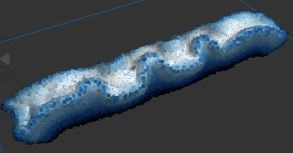aigan said:
Penumbra (2007) came a couple of years after HL2 (2004) and seems to have taken some inspiration from it.
Not really, a very different kind of game. It founded the ‘Indie Horror’ genre, and imo also the Walking Simulator. Physics is used primarily to immerse the player with the world in a subtle way, HL2 used it as another weapon. But both games sow the profit of creative gameplay from it. In my experience, simulations have the property to emerge unexpected stuff, which enables creativity as a bonus.
aigan said:
I got a bit stumped by the question of what to do in the game.
I've watched the ‘Systems Are Everywhere’ video from your playlist. It explains what ‘systemic’ means. I really have not heard the term before, tbh.
And she provides answers to this question. So i find that really interesting and promising.
But it's not yet a solution. For example, she lists tools and their effect on systems, giving examples in form of ‘stories’ (which i would rather see as thoughts of player speculations / ideas, or conclusions on what he could do with given tools). But the problem is: None of those examples are convincing in providing fun. It's still much more fun to put the crosshair on everything that moves and shooting it down.
This issue goes through the whole presentation. Examples are about how to model a real world like ecosystem with systems. But there is no fun or obvious motivation to affect this. So she has problems to come up with good examples. The primary idea feels right and promising, but we do not yet know what to do with it.
I guess we need to come up with systems specifically designed around being fun and interesting to interact with. I was hitting this same wall long before, when thinking about how to get emerging options for a game. But now i know other people think in the same directions, and there is related terminology and also games which work.
There also is another interesting about about the presentation, and her vision on how to realize it, aligning to your own vision of modeling systemic stories with layers of situations, NPCs remembering your actions… up to emotions and drama in the end, iirc.
No matter how we call it - layers or systems, it is a top down approach. You know what you want, you divide into smaller problems, you design solutions to achieve the desired outcome.
I failed on playing Dwarf Fortress as well so far, but hearing people calling it a huge simulator of everything, i'm pretty sure that's a good example of such top down approach, e.g. including a system to generate a full history of background story.
Nothing wrong with that, but it has non obvious limitations. The result is not really a simulation in a classical sense, it is rater a approach to model expected input and output using abstractions. It's a model, not a simulation. It's a picture of Mona Lisa, but not Mona Lisa herself. And due to that, it won't emerge as much options as hoped eventually, even if it was designed with that goal in mind.
The alternative - a bottom up approach and true simulation - is a possibility as well. But because it's hard to model and design as intended this way, we don't see many examples.
Maybe Minecraft. There are some blocks which enable to model logic, maybe 'redstone', similar to switches, transistors, and stuff like that. It can simulate electrical circuits with logic gates, i guess. That's something simple, but it's hard to predict what players might do with it. And we have seen, they used it to make basic calculators, up to an Atari 2600 emulator.
My personal development gave me another example. I worked on a traditional particle fluid simulator. Teh goal was procedural creation, e.g. to simulate cracks propagating through a material. To provoke this effect, i have used a curvy velocity field on the floor, intended to bend the material, tearing it apart, etc. And i also gave the material itself the desire to contract or expand.
It worked, cracks have formed as desired, but at one point something unexpected has happened. My block of fluid particles started to move like a snail. It looked lik some underwater animal, and it behaved like being alive.
I have no video, but a picture (which i surely have posted 5 times here already):

You see those snake like edges, and they moved like a snake moves. What started as a simple box of particles, started to crawl around and i was shocked. In this moment, i felt like having learnt something about how life might form out of dead matter, without any intent, logic, or intelligence.
Recently i found some people seriously work on something seemingly similar:
Pretty interesting.
But hard to control ofc.
Still, the bottom up way has an advantage: It creates complexity out of simple rules, and it can emerge the unexpected.
To apply this to our goals here, we would just simulate how atoms work, and we would get landscapes with living creatures having economy, relationships, and everything.
I don't say that's possible or practical, but i think combining top down and bottom up approaches is probably fruitful.
But you can't design bottom up on paper.
You also can not compose a catchy earwig melody on command when you need it.
It just happens while you work on something, coincidentally, by luck.
So you should get started with your text based prototype, and if things don't work out as planned, be ready to change your plans. That's also a form of bottom up, and one that actually works for me, sometimes. ; )




